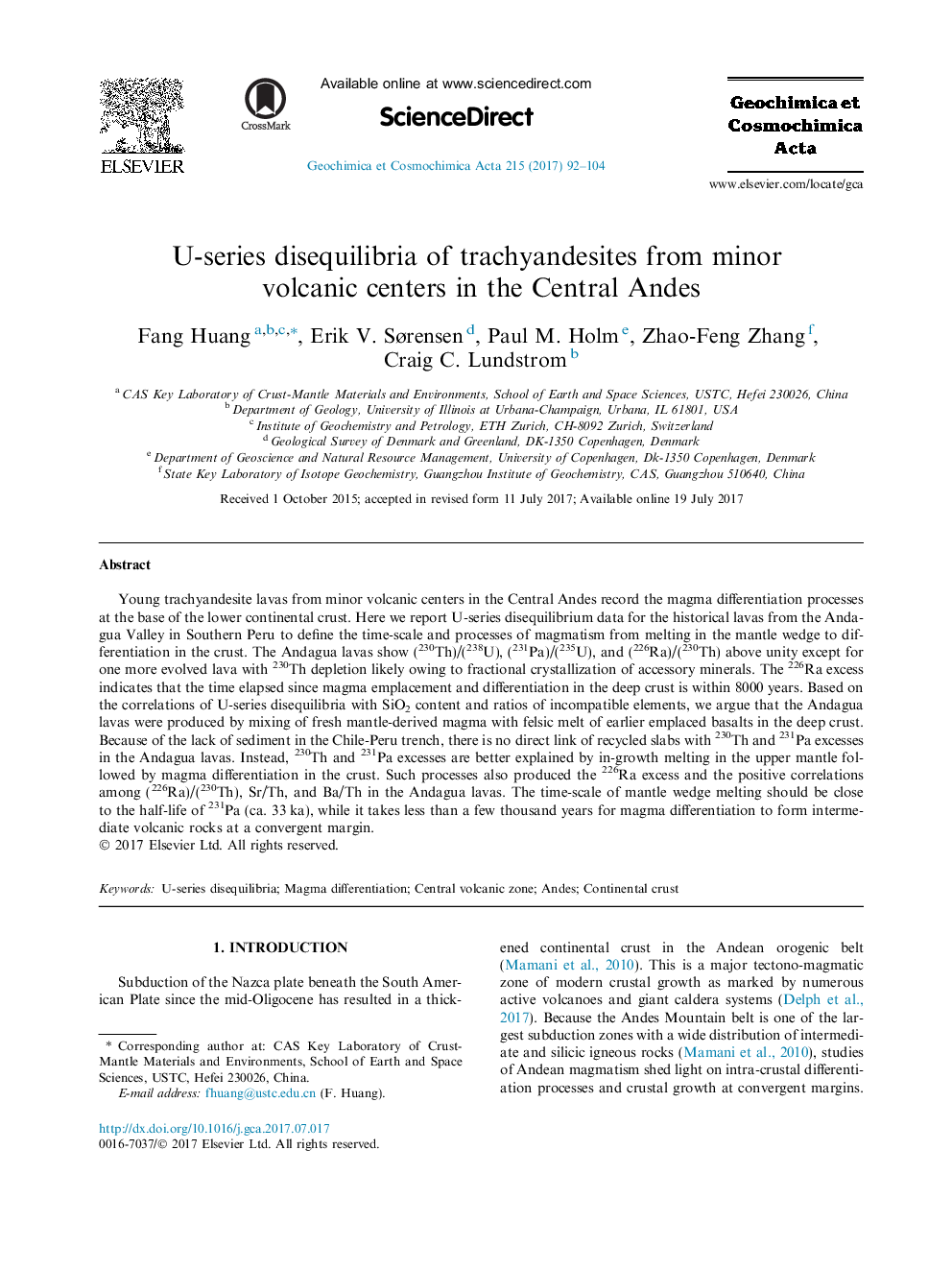| Article ID | Journal | Published Year | Pages | File Type |
|---|---|---|---|---|
| 5783235 | Geochimica et Cosmochimica Acta | 2017 | 13 Pages |
Abstract
Young trachyandesite lavas from minor volcanic centers in the Central Andes record the magma differentiation processes at the base of the lower continental crust. Here we report U-series disequilibrium data for the historical lavas from the Andagua Valley in Southern Peru to define the time-scale and processes of magmatism from melting in the mantle wedge to differentiation in the crust. The Andagua lavas show (230Th)/(238U), (231Pa)/(235U), and (226Ra)/(230Th) above unity except for one more evolved lava with 230Th depletion likely owing to fractional crystallization of accessory minerals. The 226Ra excess indicates that the time elapsed since magma emplacement and differentiation in the deep crust is within 8000Â years. Based on the correlations of U-series disequilibria with SiO2 content and ratios of incompatible elements, we argue that the Andagua lavas were produced by mixing of fresh mantle-derived magma with felsic melt of earlier emplaced basalts in the deep crust. Because of the lack of sediment in the Chile-Peru trench, there is no direct link of recycled slabs with 230Th and 231Pa excesses in the Andagua lavas. Instead, 230Th and 231Pa excesses are better explained by in-growth melting in the upper mantle followed by magma differentiation in the crust. Such processes also produced the 226Ra excess and the positive correlations among (226Ra)/(230Th), Sr/Th, and Ba/Th in the Andagua lavas. The time-scale of mantle wedge melting should be close to the half-life of 231Pa (ca. 33Â ka), while it takes less than a few thousand years for magma differentiation to form intermediate volcanic rocks at a convergent margin.
Related Topics
Physical Sciences and Engineering
Earth and Planetary Sciences
Geochemistry and Petrology
Authors
Fang Huang, Erik V. Sørensen, Paul M. Holm, Zhao-Feng Zhang, Craig C. Lundstrom,
